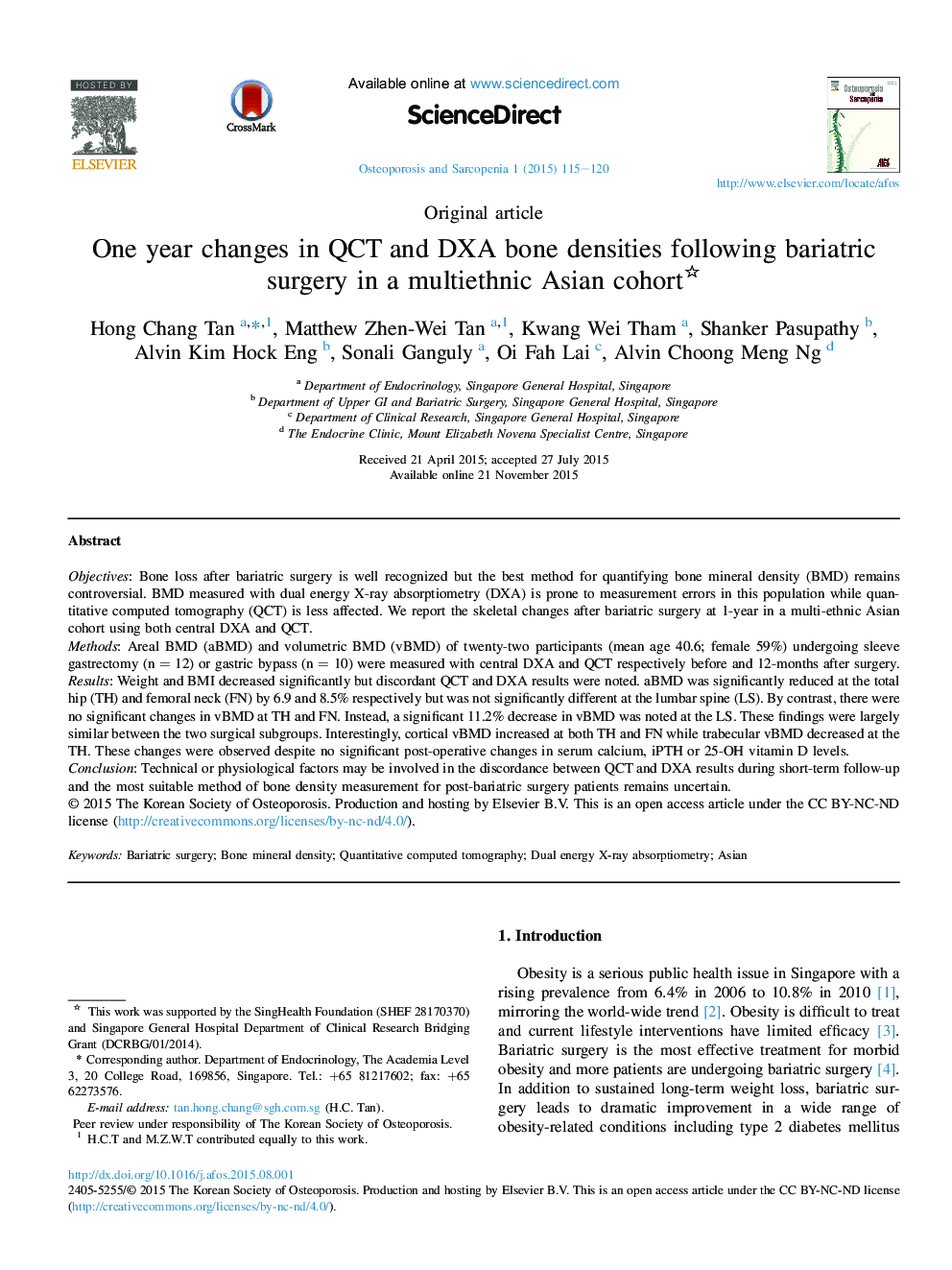| Article ID | Journal | Published Year | Pages | File Type |
|---|---|---|---|---|
| 3277918 | Osteoporosis and Sarcopenia | 2015 | 6 Pages |
ObjectivesBone loss after bariatric surgery is well recognized but the best method for quantifying bone mineral density (BMD) remains controversial. BMD measured with dual energy X-ray absorptiometry (DXA) is prone to measurement errors in this population while quantitative computed tomography (QCT) is less affected. We report the skeletal changes after bariatric surgery at 1-year in a multi-ethnic Asian cohort using both central DXA and QCT.MethodsAreal BMD (aBMD) and volumetric BMD (vBMD) of twenty-two participants (mean age 40.6; female 59%) undergoing sleeve gastrectomy (n = 12) or gastric bypass (n = 10) were measured with central DXA and QCT respectively before and 12-months after surgery.ResultsWeight and BMI decreased significantly but discordant QCT and DXA results were noted. aBMD was significantly reduced at the total hip (TH) and femoral neck (FN) by 6.9 and 8.5% respectively but was not significantly different at the lumbar spine (LS). By contrast, there were no significant changes in vBMD at TH and FN. Instead, a significant 11.2% decrease in vBMD was noted at the LS. These findings were largely similar between the two surgical subgroups. Interestingly, cortical vBMD increased at both TH and FN while trabecular vBMD decreased at the TH. These changes were observed despite no significant post-operative changes in serum calcium, iPTH or 25-OH vitamin D levels.ConclusionTechnical or physiological factors may be involved in the discordance between QCT and DXA results during short-term follow-up and the most suitable method of bone density measurement for post-bariatric surgery patients remains uncertain.
